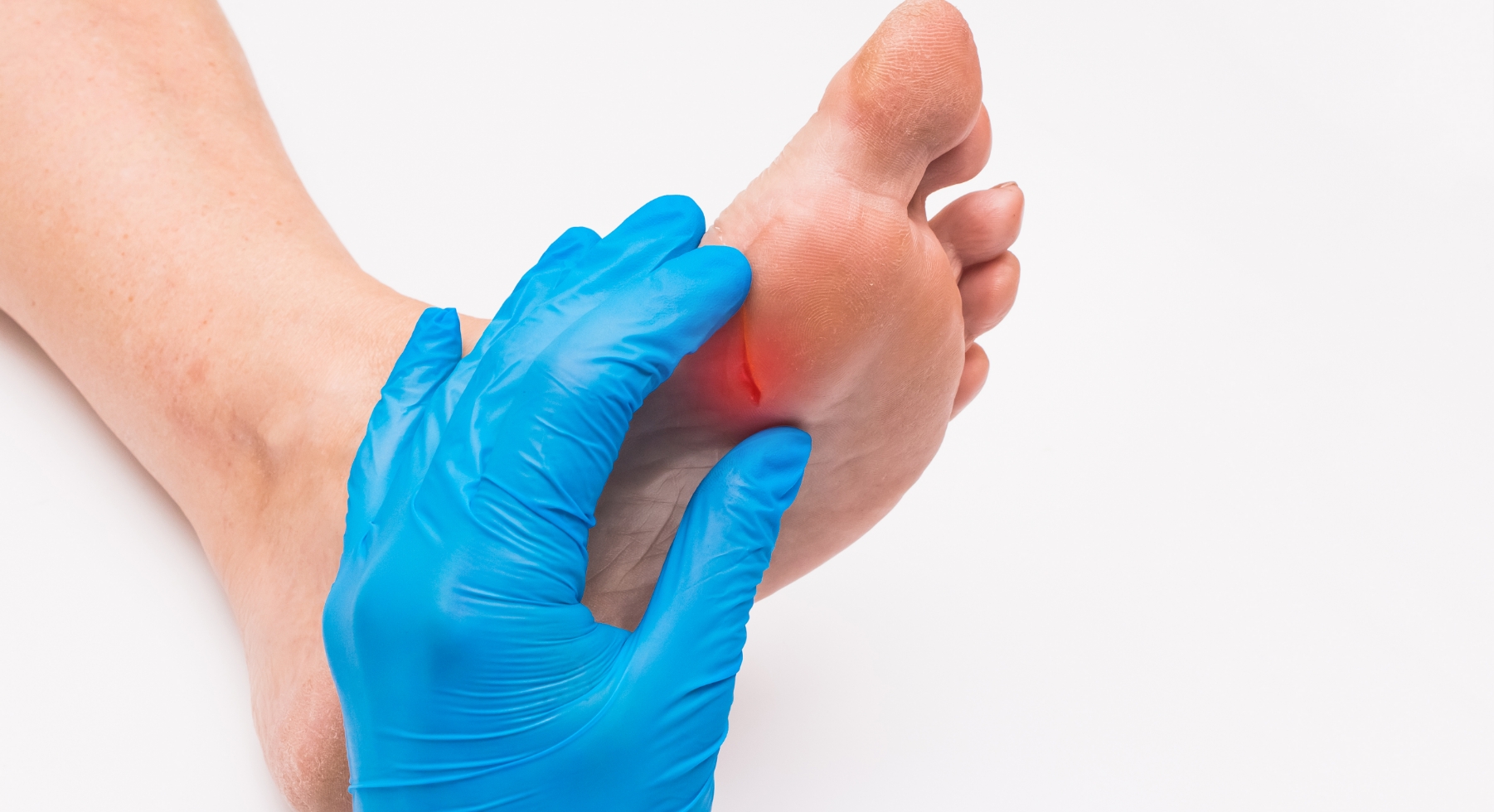Diabetic Foot

Diabetes can give rise to one of its chronic complications known as "Diabetic Foot Ulcers" (DFU); according to statistics,
approximately 1/4 of diabetic patients
have faced the challenges of "Diabetic Foot" in their lives.
The so-called Diabetic Foot Ulcers (DFU) refers to lower limb complications caused by poorly controlled blood sugar levels over an extended period. In other words, any part of a diabetic
patient's foot can develop wounds of varying severity. Generally, the causes of Diabetic Foot can be categorized into three major types:
Diabetes can give rise to one of its chronic complications known as "Diabetic Foot Ulcers" (DFU); according to statistics, approximately 1/4 of
diabetic patients
have faced the challenges of "Diabetic Foot" in their lives.
The so-called Diabetic Foot Ulcers (DFU) refers to lower limb complications caused by poorly controlled blood sugar levels over an extended period. In other words, any part of a diabetic
patient's foot can develop wounds of varying severity. Generally, the causes of Diabetic Foot can be categorized into three major types:
Neuropathy
Neuropathy refers to the degeneration of foot nerves due to blood sugar levels. When there is a wound on the foot, it may not cause pain, and the majority of people tend to believe that it is not a disease, leading to a perception that there is no need for medical attention. Consequently, seeking medical help is often delayed. Neuropathy includes changes in both motor and sensory nerves, further contributing to the development of chronic ulcers in diabetic feet.
Neuropathy can be further categorized into the following types:
- Sensory Neuropathy:
This type of neuropathy affects the sensory nerves, leading to the loss of sensation in the extremities. It typically first impacts the distant parts, often presenting symptoms in the toes and feet. When there is a delay in sensing stimuli, it becomes challenging to detect injuries caused by sharp objects, friction, or even foreign objects in shoes. Neglecting proper care after a wound occurs can easily result in complex infections.
- Motor Neuropathy:
Motor neuropathy causes atrophy of the muscles in the feet, resulting in muscle weakness or changes in foot shape, such as a high arch. The imbalance in foot muscles leads to increased force on certain points of the sole, causing deformities in the arch and protrusion of the metatarsal bones. This makes individuals more susceptible to abrasions when walking or wearing shoes. Combined with the difficulty of wound healing, it can lead to the development of chronic diabetic foot conditions.
- Autonomic Neuropathy:
Patients with autonomic neuropathy experience partial loss of physiological functions, including control over blood flow, sweating, skin moisture, and certain abnormalities in the nerves comprising the foot's skeletal structure. Using the loss of skin moisture regulation as an example, inadequate skin moisture can result in dryness, leading to cracks in the feet. The areas with hardened skin are particularly prone to dryness. In the presence of such conditions, dry and cracked skin can become a site for microbial infections.


Vascular obstruction
When blood vessels in the lower extremities of diabetic patients are blocked, blood circulation cannot flow into the toes, gradually leading to blackening and necrosis. As the blockage area increases, it is commonly referred to as "foot stroke," and amputation may become necessary for the patient.
In addition, common symptoms in diabetic patients include cold hands and feet due to poor blood flow. This is often caused by peripheral vascular disease, where inadequate blood supply to the lower extremities (meaning local ischemia) results in tissue hypoxia. The affected tissues cannot receive sufficient nutrients through blood circulation, and the elimination of metabolic waste is also reduced. Peripheral vascular disease is mainly caused by arteriosclerosis, with risk factors including aging, smoking, obesity, and high blood sugar. Symptoms of peripheral vascular disease include intermittent claudication, cold feet, and pain during rest.
Severe wound infection
Severe wound infections can lead to suppuration and bleeding, and the bacteria involved may even cause osteomyelitis, potentially triggering sepsis and endangering life.
- DFU Wound Grading
The most common method of grading diabetic foot ulcers (DFU) is the Wagner Ulcer Classification (Wagner System). This classification system categorizes diabetic foot ulcers into levels 0 to 5 based on factors such as the depth of invasion, the presence of osteomyelitis or necrosis, and the extent of tissue necrosis.
-
GradeCharacteristics
-
0Belongs to the high-risk foot (with structural abnormalities or cellulitis), without ulcers
-
1Superficial ulcer, covering part or the entire layer of the skin
-
2The ulcer invades ligaments, tendons, joint cavities, or deep fascia, but there is no abscess or osteomyelitis.
-
3Deep ulcers, accompanied by abscess, osteomyelitis, or septic arthritis(joint sepsis)
-
4Localized gangrene, involving part of the toe or heel
-
5Extensive gangrene involving the entire foot
(Photo credit: ShutterStock)
-
Reference:
- Frykberg RG, Zgonis T, Armstrong DG, et al: DIABETIC FOOT DISORDERS: A CLINICAL PRACTICE GUIDELINE (2006 revision). Journal of Foot & Ankle Surgery 2006;45: S1-66.
- Monteiro-Soares M et al. Diabetes Metab Res Rev. 2023;e3648.
- Armstrong DG et al. N Engl J Med. 2017;376(24):2367-2375.
- Armstrong DG et al. JAMA. 2023;330(1):62-75.
